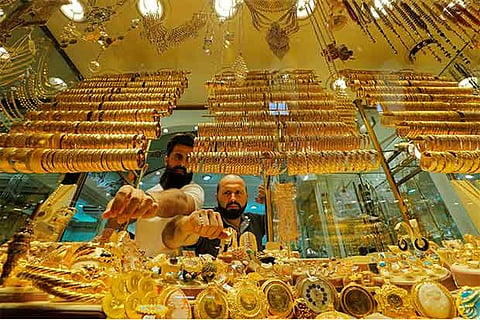

Mumbai
In the previous week, forex reserves had declined by $ 819.5 mn to $ 399.282 bn. In the reporting week, foreign currency assets, a major component of the overall reserves, increased by $ 1.055 bn to $ 376.154 bn, as per RBI data.
Expressed in US dollar terms, foreign currency assets include the effect of appreciation/depreciation of the non-US currencies such as the euro, pound and yen held in the reserves.
Forex reserves had touched a record high of $ 426.028 bn in the week to April 13, 2018, but have been declining since then.
According to forex analysts, the dip in reserves is on account of RBI’s intervention in forex reserves to stem fall in the rupee. Gold reserves rose by $ 144 mn to $ 20.378 bn in the reporting week.
The special drawing rights with the International Monetary Fund (IMF) rose by $ 2.8 mn to $ 1.478 bn. The country’s reserve position with the IMF also increased by $ 4.9 mn to $ 2.478 bn, the apex bank said.
‘Gold demand to remain buoyant’
Gold demand by central banks globally may remain buoyant driven by diversification and the need to maintain higher overall forex reserve balances, according to the World Gold Council (WGC).
Central banks added a net total of 193.3 tonne of gold to their reserves in the first six months of 2018, an 8 pc increase from the 178.6 tonne bought in the same period last year, WGC said in its report named ‘Market Update: Central bank buying activity’.
“Looking ahead, we expect central bank demand to stay buoyant as diversification will continue to be an important driver of demand, as will the transition to a multi-polar currency reserves system over the coming years,” it said. Many emerging market central banks have a high degree of exposure to the US dollar and turn to gold as a natural currency hedge.
Further, it said emerging market central banks’ forex reserves have risen since the financial crisis, with a number increasing their gold holdings too. “This marks the strongest first half for central bank gold buying since 2015,” it added.
Visit news.dtnext.in to explore our interactive epaper!
Download the DT Next app for more exciting features!
Click here for iOS
Click here for Android